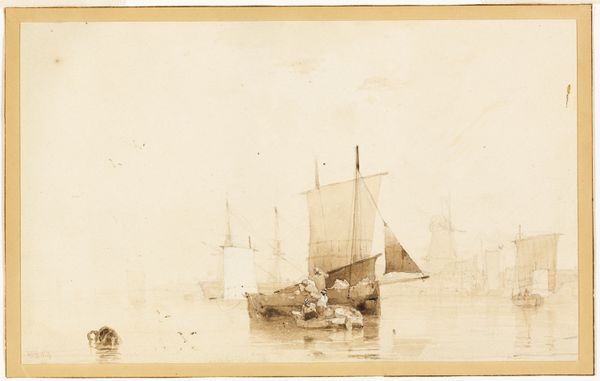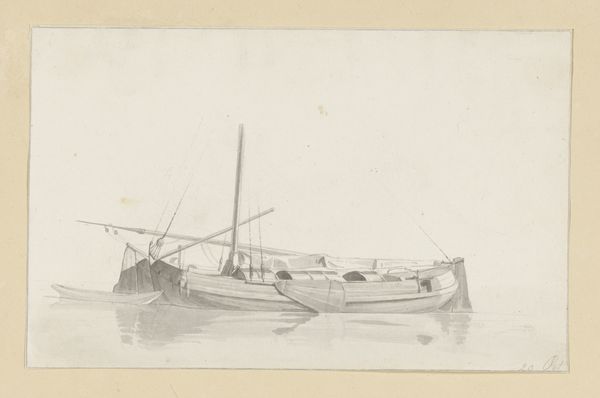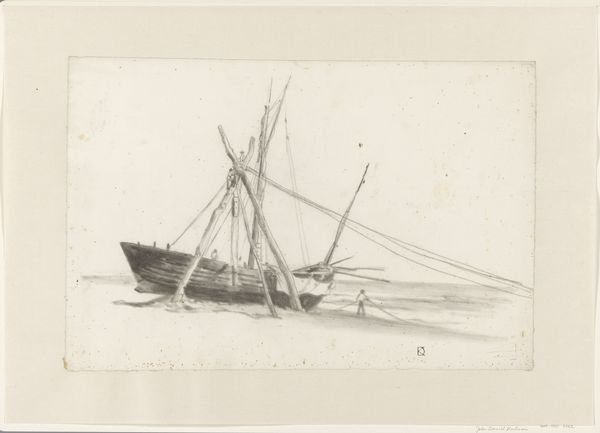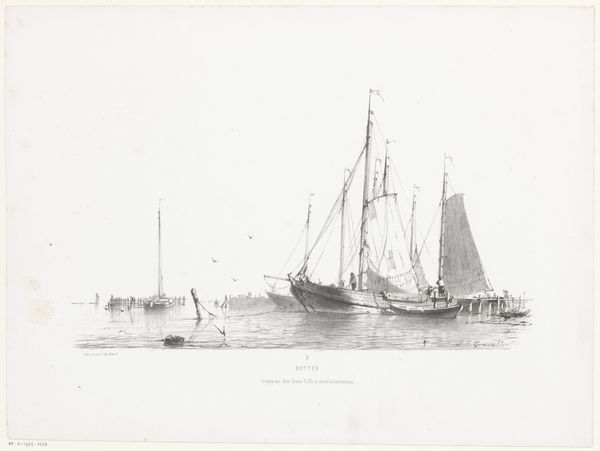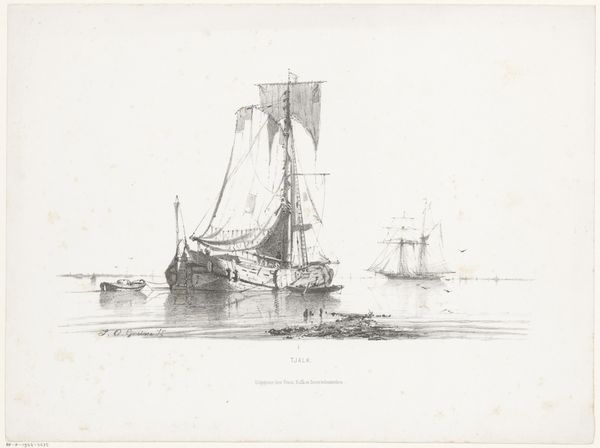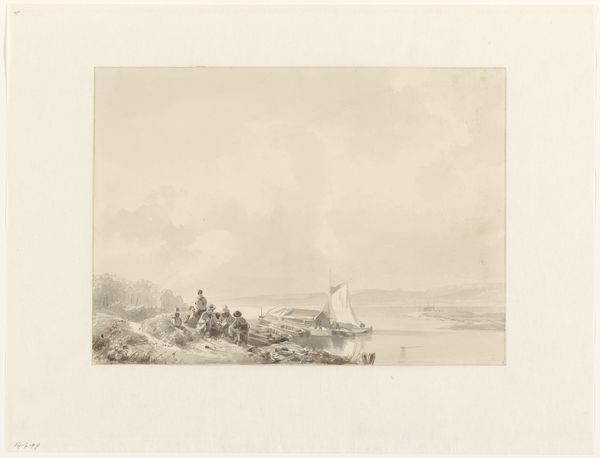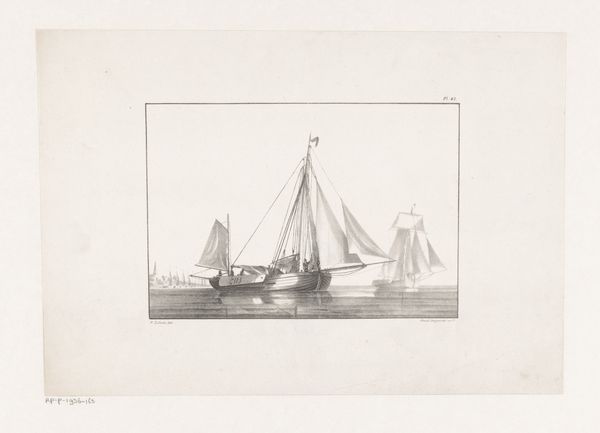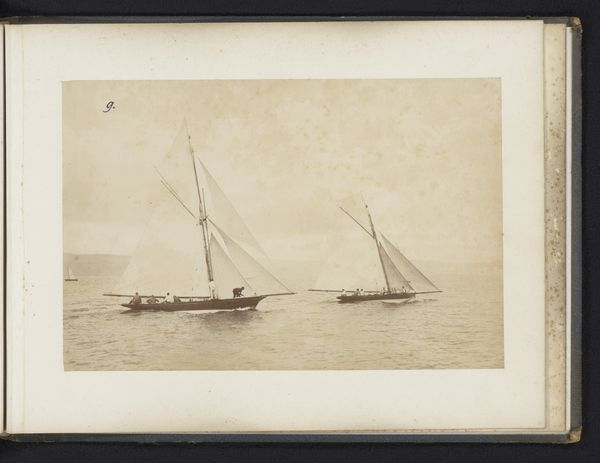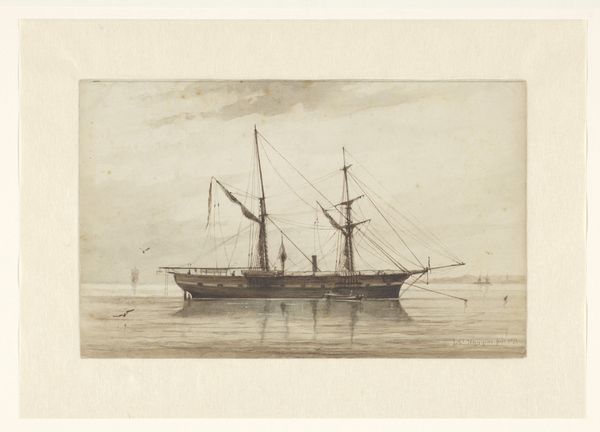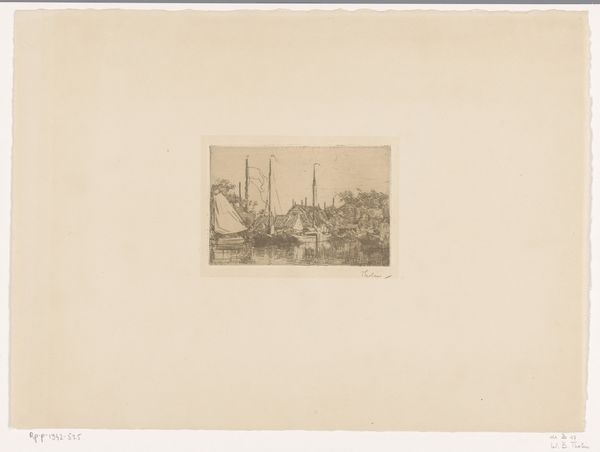
drawing, pencil
#
drawing
#
pencil sketch
#
landscape
#
romanticism
#
pencil
#
watercolour illustration
#
realism
#
monochrome
Dimensions: height 297 mm, width 431 mm
Copyright: Rijks Museum: Open Domain
Editor: Here we have Albertus van Beest’s “Vissersbootje voor de kust op kalme zee,” a pencil drawing likely from between 1830 and 1860, currently held at the Rijksmuseum. It’s so delicate! The boat almost seems to fade into the mist. What's your interpretation of this seemingly simple coastal scene? Curator: Simple it may seem, but I see a deliberate orchestration of material conditions and social relations. The pencil, the paper – these are industrial products, making art accessible in a way unimaginable before. Consider the labor: the pencil maker, the paper mill worker, even the fisherman depicted – all contribute to a system of production reflected in this image. Editor: That's fascinating. I hadn’t considered it that way. So, you're saying the choice of materials is less about aesthetics and more about accessibility and… almost like, a document of industrialization? Curator: Precisely. Romanticism often masked the harsh realities of labor and industrial production, but this work subtly reveals its reliance on these forces. Notice how the delicate lines create a scene of calm, yet the scene itself, a fishing boat, points to the labor of catching food, the material extraction from the sea. How were the lives of the depicted fisherman entangled with growing industry and markets? Editor: So, beyond just a pretty picture, it's reflecting this intersection of industry and traditional life. Something that wasn’t obviously visible at first glance. Curator: Exactly. And understanding that material connection allows us to see this artwork not just as a representation, but as a product of its time, shaped by its social and economic context. Even consumption! Was this affordable art available for purchase, widening its audience beyond elites? These are important material and social conditions reflected in and created by art. Editor: I definitely have a new appreciation for how materials and methods tie an artwork into the bigger picture, literally and figuratively! Thanks for showing that link! Curator: Indeed, it's through understanding the material reality of art-making that we gain deeper insights into its cultural significance.
Comments
No comments
Be the first to comment and join the conversation on the ultimate creative platform.
